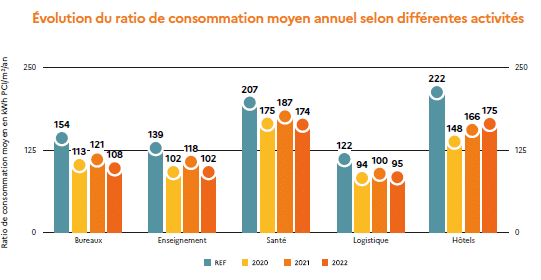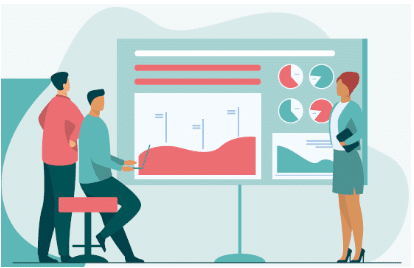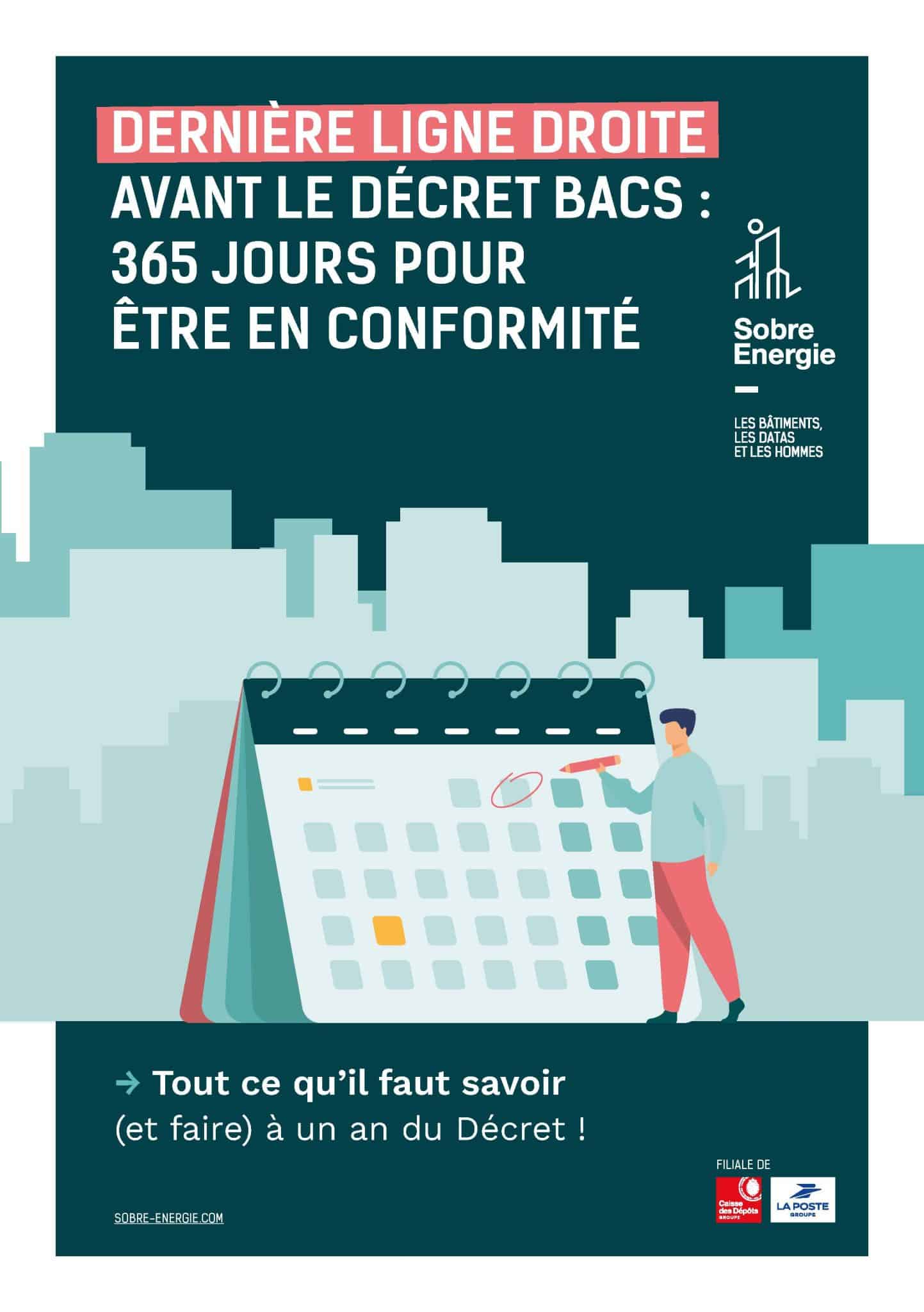The recent study published by ADEME provides statistics rich in lessons on the energy performance of French tertiary buildings.
In France, the tertiary sector totals approximately 1.2 billion m² and in 2021 represented 17% of final energy consumption, or 265 TWh.*
Among these buildings, 996 million m² are subject to the Tertiary Eco Energy Decree (buildings of + 1000 m²). 57% of these taxable persons carried out their consumption declaration procedures on the Ademe OPERAT platform.
Evolution of global energy consumption since 2020
Since 2020, the energy consumption of tertiary buildings in France has experienced significant variations due to several external factors. The health crisis linked to COVID-19 has temporarily reduced energy consumption, in particular due to teleworking which has reduced office occupancy. Subsequently, the surge in energy prices prompted companies to look for solutions to optimize their consumption.

According to Ademe statistics on OPERAT**, the top 3 most consuming sectors in 2021 are as follows:

How to comply with the Tertiary Decree?
Ultimately, the Tertiary Decree sets a consumption reduction objective for all those subject to it, to be achieved in absolute or relative value:
- -40% by 2030
- -50% by 2040
- -60% by 2050
Consumption for the year 2023 must be declared before September 30, 2024 on the Ademe OPERAT platform.
How to establish your energy strategy for tertiary buildings?
Mastering your energy strategy is becoming essential in a strengthening regulatory context (Tertiary Decree, BACS Decree, APER law) and sustainably rising energy prices:
Three major crises have influenced the energy consumption of tertiary buildings since 2020.
A massive drop with the pandemic but a post-COVID-19 rebound
The pandemic has led to a reduction in office usage, with a temporary drop in energy consumption. However, this situation has initiated a reflection on the management of workspaces, encouraging rearrangements and more efficient energy practices.
Rise in Energy Prices
Since 2022, the increase in energy prices has encouraged companies to accelerate their energy sobriety strategy by carrying out audits to prioritize energy renovation work and monitoring the consumption of their tertiary buildings through a tool piloting.

Energy Sobriety Plan
In response to the energy crisis, the French government launched an energy sobriety plan. This plan made it possible to reduce gas and electricity consumption by 12% over one year and aims for a reduction of
40% by 2050 compared to 2019 levels.
Best practices for reducing energy consumption
To achieve energy efficiency objectives, several good practices can be implemented in tertiary buildings, depending on the specific uses:
Heating
Maintaining the temperature at 19°C in winter is a key recommendation for reducing energy consumption linked to heating. Improving the insulation of buildings, particularly pipes, is also crucial to prevent heat loss.
Lighting
Optimizing natural lighting and using energy-efficient LED bulbs are effective measures to reduce energy consumption. In addition, the implementation of automatic lighting management systems makes it possible to turn off lights when spaces are not occupied.
Air conditioning
To reduce consumption linked to air conditioning, it is recommended to maintain a temperature of 26°C in summer. The use of blinds and the greening of outdoor spaces can also help limit the heat effect.
Process and equipment
The renewal of equipment with more efficient and less energy-consuming models, as well as the implementation of specific action plans for energy efficiency, are essential. Companies can also benefit from financial aid to improve the energy performance of their installations.
To prioritize and implement these good practices, the key tool is the energy audit: energy audits on our SAAS Data MARC software allow you to simulate the implementation of a predefined scenario or compose your bouquet of actions with projections financial and energy gains, according to your ROI and objectives linked to the Tertiary Decree.
At Sobre Energie, our digital audits are integrated into our energy management platform, within a specific module.
*source: SDES, key energy figures, 2023 edition
